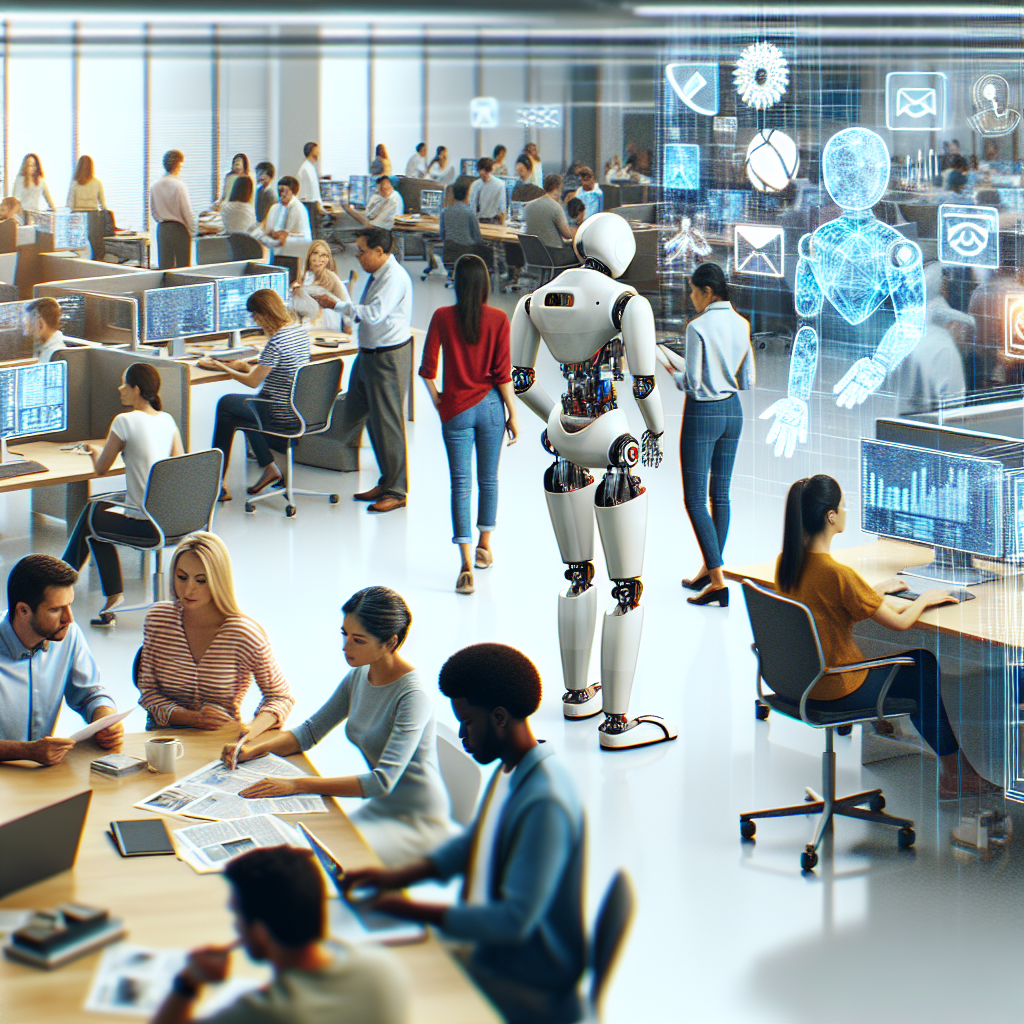Artificial Intelligence (AI) has been revolutionizing various industries, and the newsroom is no exception. The impact of AI on newsroom collaboration is significant, as it streamlines processes, enhances efficiency, and improves the overall quality of news content. In this article, we will explore the various ways in which AI is transforming newsroom collaboration and the potential benefits and challenges that come with it.
One of the key areas where AI is making a difference in newsroom collaboration is in content creation. AI-powered tools can generate news stories, analyze data, and even write articles based on predefined parameters. This frees up journalists to focus on more in-depth reporting and analysis, while AI takes care of routine tasks such as fact-checking and summarizing information. This can lead to a more efficient newsroom workflow and faster turnaround times for news stories.
Another way AI is transforming newsroom collaboration is through the use of chatbots and virtual assistants. These AI-powered tools can help journalists and editors communicate more effectively, schedule meetings, assign tasks, and provide real-time updates on breaking news stories. Chatbots can also help with research tasks, such as finding relevant sources or background information on a particular topic. This can improve collaboration within the newsroom by streamlining communication and making it easier for team members to work together effectively.
AI is also being used to enhance the quality of news content by analyzing data and identifying trends. AI-powered tools can analyze social media trends, website traffic, and reader engagement to provide insights into what topics are resonating with audiences. This information can help journalists and editors tailor their content to better meet the needs of their audience and increase reader engagement. AI can also help identify fake news and misinformation, ensuring that news stories are accurate and reliable.
Despite the many benefits of AI in newsroom collaboration, there are also challenges that come with implementing AI technology. One of the main concerns is the potential impact on jobs, as AI-powered tools can automate tasks that were previously done by humans. This can lead to job displacement and changes in the roles and responsibilities of journalists and editors. However, many experts believe that AI will create new opportunities for journalists to focus on higher-level tasks, such as investigative reporting and analysis, while AI takes care of routine tasks.
Another challenge is the potential for bias in AI algorithms. AI tools are only as good as the data they are trained on, and if the data is biased or incomplete, it can lead to biased results. This can have serious implications for news organizations, as biased content can damage their reputation and credibility. It is important for newsrooms to be aware of these potential biases and take steps to mitigate them, such as ensuring that AI algorithms are transparent and regularly audited for bias.
In conclusion, AI is transforming newsroom collaboration in many ways, from content creation to communication and data analysis. While there are challenges that come with implementing AI technology, the benefits of AI in newsrooms are clear. By leveraging AI-powered tools, news organizations can improve efficiency, enhance the quality of news content, and better meet the needs of their audience. As AI continues to evolve, it will be exciting to see how it further shapes the future of newsroom collaboration.
FAQs:
Q: Will AI replace journalists in the newsroom?
A: While AI-powered tools can automate certain tasks, such as content creation and data analysis, they are not likely to replace journalists entirely. Instead, AI is expected to augment the work of journalists by handling routine tasks and freeing up time for more in-depth reporting and analysis.
Q: How can newsrooms ensure that AI algorithms are unbiased?
A: Newsrooms can ensure that AI algorithms are unbiased by regularly auditing them for bias, being transparent about the data used to train the algorithms, and taking steps to mitigate bias in the data. It is important for news organizations to be aware of the potential biases in AI algorithms and take proactive measures to address them.
Q: What are some examples of AI-powered tools used in newsrooms?
A: Some examples of AI-powered tools used in newsrooms include chatbots and virtual assistants for communication and task management, content generation tools for writing articles and summarizing information, and data analysis tools for identifying trends and insights in data. These tools can help streamline newsroom collaboration and improve the overall quality of news content.

